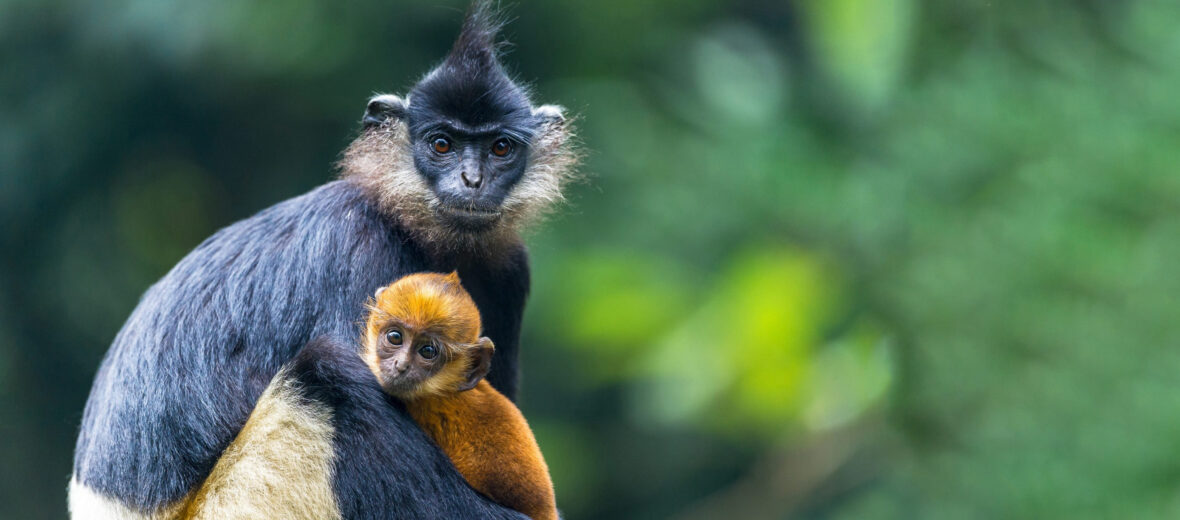
The Delacour’s langur, aka Delacour’s lutung, hails only from northern regions of Vietnam. These primates prefer forests, inland cliffs, mountain peaks, and subterranean habitats. Sadly, due to habitat loss and destruction at the hands of mining and quarrying; hunting; trapping; and interference by recreational activities, these primates are listed as Critically Endangered by the IUCN. Their numbers are also decreasing.
First the Stats…
Scientific name: Trachypithecus delacouri
Weight: Up to 23 lbs.
Length: Up to 24 inches, plus up to a 33 inch tail
Lifespan: Up to 20 years
Now on to the Facts!
1.) These primates numbered only at 250 back in 2015, so they most likely number far less now.
2.) The Dalacour’s langur is just a little larger than it’s 2 known cousins, the Laotian langur and the François’ langur.
3.) They are diurnal (active during the day).
4.) Nearly 80% of their diet is comprised of various foliage. The remainder consists of flowers, fruit, and seeds.
5.) Troops are comprised of males and females and number up to 30 individuals. However, separate bachelor and bachelorette troops are more likely to be seen.
But wait, there’s more on the Delacour’s langur!
6.) Like all primates, social bonding is maintained by grooming and play.
7.) Males defend their troop from rival males via various visual displays and loud hooting calls. If these attempts don’t work, then chases and even fights may ensue.
Did you know…?
These langurs are named after the French-American ornithologist Jean Théodore Delacour.
8.) Even though they live in forested habitats, these langurs are primarily terrestrial (spend their lives on the ground). However, they will sometimes take to the trees if the mood strikes them.
9.) Females undergo up to a 200 day gestation (pregnancy) that yields a single infant.
10.) Infants are born precocial (self sufficient) and bear orange fur.
But wait, there’s still more on the Delacour’s langur!
11.) The infant is weaned in up to 21 months.
12.) Sadly, only the populations in Van Long Nature Reserve may still be viable and able to sustain their populations. The other populations have all been extirpated (rooted out and destroyed completely).
13.) Leopards and dholes are their only known natural predators.
14.) These are among the top 25 most endangered primates.
15.) You can help save these amazing creatures by visiting the Rainforest Trust website.
Now a Short Delacour’s Langur Video!
Be sure to share & comment below! Also, check out the Critter Science YouTube channel. Videos added regularly!
Want to suggest a critter for me to write about? Let me know here.
Some source material acquired from: Wikipedia & IUCN
Photo credit: Fauna & Flora



